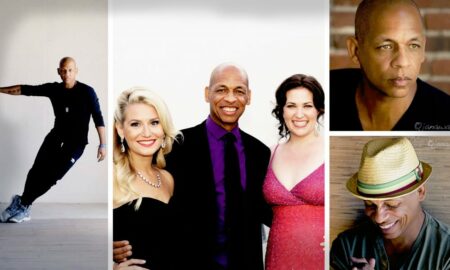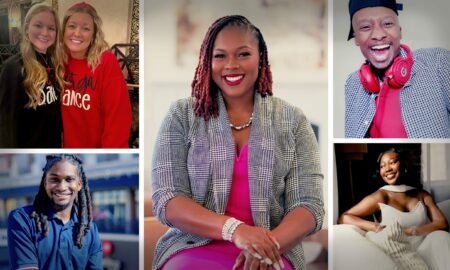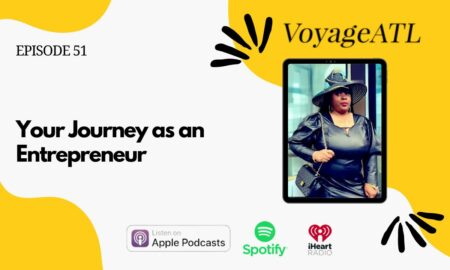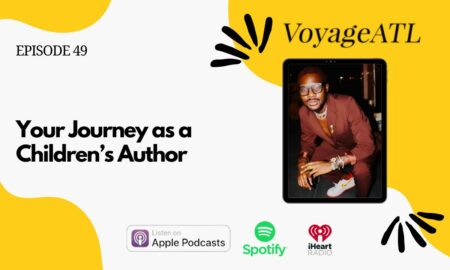

Today we’d like to introduce you to Garry Jones.
So, before we jump into specific questions about what you do, why don’t you give us some details about you and your story.
As I reflect, I think of what’s happening on a national level with the NFL, Jay-Z, and Roc-Nation each responding publicly to Colin Kaepernick using his platform to address social justice issues.
Shortly after receiving my Bachelor of Science degree in Criminal Justice from North Carolina Central University in 1986, I moved to Washington, D.C. to pursue a career with D.C. Department of Corrections as a Correctional Officer. I worked at D.C. Dept. of Corrections located in Lorton, VA. I took the job in Washington, D.C. because I couldn’t get hired in North Carolina with the Probation/Parole (although I had done an internship as a Probation/Parole officer), nor was I able to get a Correctional Officer job in N.C. In 1988, I relocated back to Raleigh and started working with the North Carolina Department of Correction as a Correctional Officer assigned to Triangle Correctional Center.
I wasn’t satisfied with just being a Correctional Officer. I wanted to be a well-rounded professional in the prison system. In 1989, I was reassigned to Wake Correctional Center (Raleigh, N.C.) as a Case Manager. One year later, I transferred to perform the same role at Goldsboro Correctional Center located in Goldsboro, N.C. Although the case manager and the correctional officer jobs were developmental, I didn’t feel intellectually challenged. I applied for an Assistant Warden job at Central Prison in Raleigh, N.C. and to my surprise, I was called for an interview. The staff was so impressed with my first interview that they called me back for a second. I didn’t get the job as an Assistant Warden – but I was told to keep trying because I had the skills needed to operate a prison.
After working for four state institutions, I decided to apply for a job at the Department of Justice/Federal Bureau of Prisons. In order to work for the Federal Bureau of Prisons, I had to start all over again as a Correctional Officer. In January of 1991, I was hired at the Federal Prison Camp located at Seymour Johnson Air Force Base in Goldsboro, N.C. I already had a plan in mind – I was going to gain enough experience to become a Unit Manager. Little did I know, my supervisors had other plans for me. After working as a Correctional Officer for one year, I was approached by the Captain and asked could I fill in as an acting Lieutenant for two weeks. I accepted eagerly, knowing that this experience could lead to the job I wanted.
I worked as the acting Lieutenant for two weeks, which quickly turned into three months, then six – before I knew it, after a year of service, I was hired permanently in 1993 as a Lieutenant. I never went back to working as a correctional officer after serving as acting Lieutenant. I received a call from the former warden at FCI Seymour Johnson, now located at the Federal Correctional Institution in Tallahassee, Florida. He wanted to hire me as a senior Lieutenant at the FCI Tallahassee. He told me that I had the right kind of communication and leadership skills for the job. In July 1995, I relocated to Tallahassee, Florida.
I wasn’t in Tallahassee for a full three months before riots broke out at several institutions in the Federal Bureau of Prisons. In October 1995, I was the Special Operation Response Lieutenant and I was called to take my team to the Federal Correctional Institution in Marianna, Florida to quell the disturbance. After the riots were over, I researched and discovered the inmates were rioting over the mandatory minimum sentencing laws on powder cocaine and crack cocaine. Although crack and powder cocaine are basically the same drugs in different forms, the sentences meted out were significantly different. You were more likely to receive a stiffer sentence for being convicted of possessing or distributing crack cocaine than powder cocaine; the majority of blacks received stiffer sentences for having crack cocaine than whites.
In 2003, I retired from the Federal Bureau of Prisons, became a motivational speaker, and authored six books. My speeches were mainly about the criminal justice system and at times on matters of social injustice – young Trayvon Martin comes to mind. On many occasions, I was invited to speak on Capitol Hill. I also created an organization called advocate4justice (A4J) to further address matters of social injustice.
After I got sick from the pressure and stress of working too much, my doctor told me to slow down the public speaking. In my heart, I still wanted to make a difference. This prompted me to introduce products encouraging balanced scales of justice for all people. A4J products now include sportswear, shoes, high-tech headphones, sports totes, and workout gear.
Great, so let’s dig a little deeper into the story – has it been an easy path overall and if not, what were the challenges you’ve had to overcome?
During my career, there were many obstacles I had to overcome. I was a friendly person and I smiled a lot – that was the personality that God gave to me. When my career started with D.C. Department of Corrections, I was told by my supervisor that I couldn’t smile while working inside a prison. I had a choice to make: I could either continue to smile and treat staff and inmates with respect or take the smile off my face and become another person. I chose the first option, to treat people on how I wanted to be treated. This didn’t win me any brownie points with my supervisor, but it felt good to be the person God created me to be. The difficulty of me smiling was that it gave the inmates the impression that I was weak and they could run a game on me, but later they found out that wasn’t the case. I tried to mitigate hostile situations verbally, but there were times I had to resolve them physically.
Earlier, I mentioned that in 1995, I had to fight in a riot where a staff member was held hostage and the inmates were hurting other inmates and destroying property. My team and I had shotguns, machine guns, 9 millimeters, flashbangs, and gas guns. In order to get the riots under control, I had to make an impossible decision: my team members wanted me to give orders to shoot their weapons, but the last thing I wanted to do was shoot or kill inmates. I gave the orders to shoot the gas instead – and within two hours, we had the riots under control. I could have very well given orders to shoot to kill and been justified in doing so, but killing someone has never been my first response to a crisis situation.
While working in the prison system, I often had to tell inmates that the staff members had jobs to do. We didn’t make the laws to send them to prison – we only adhered to the rules and regulations set by the prison. The challenge was to convince them that they had to contact their Congressmen and women, as they had created the laws and were the only ones who could enact legislative change. Their energy needed to be channeled towards helping themselves instead of hurting others.
After I retired from the Federal Bureau of Prisons, I became a motivational speaker and was often invited to speak at rallies, including an opportunity to speak on Capitol Hill. My challenges were to convince Congress that the mandatory minimum sentencing laws on crack/powder cocaine were causing the overcrowding in the prison and costing taxpayers money. 85 percent of incarcerated people are nonviolent offenders; in most cases, they were first-time offenders. Often nonviolent offenders serve more time than violent offenders. Congress didn’t want to change the laws because they didn’t want to appear weak on crime. I wanted Congress to reinstate federal parole in the federal prison in order to give inmates across the country hope. When I created advocate4justice, I wanted to provide hope to the hopeless.
My goal is to always speak out against injustice. My A4J logo consists of two scales: one scale is upside down and the other scale is right-side up. The mission of A4J is to continue to strive for the scales of justice to always be right side up. I once read in the Bible that if you witness a wrong and don’t do anything about it, then you are just as guilty as the person committing the wrong. I live by that conviction. As Martin Luther King Jr. once said, “The time is always right to do the right thing.”
Earlier, I spoke about being an author of six books:
1. Straight out of Hell “Wrong Place Wrong Time” A Gun Violence Survivor | Available at Amazon: https://www.amazon.com/Straight-Hell-WRONG-PLACE-TIME/dp/1947928112/
2. Straight out of Hell 2 True Character of a Man “Inside Truth of the Criminal Justice System” | Available at Walmart: https://www.walmart.com/ip/Straight-Out-of-Hell-2-True-Character-of-a-Man-9780998455358/143606015
3. I Wasn’t Raised to Play by Their Rules | Available at Amazon: https://www.amazon.com/Wasnt-Raised-Play-Their-Rules-ebook/dp/B0060ZNYTS/
4. Patient vs Doctor: Misdiagnosis | Available at Amazon: https://www.amazon.com/Patient-vs-Doctor-Garry-Jones/dp/0997939796/
5. Still I Rise “Manage Depression” | Available at Amazon: https://www.amazon.com/Still-Rise-Manage-Depression-Balanced/dp/0998455342/
6. Kinston, N.C. “The Formula to Go Pro” | Available at VMH Publishing: https://vmhpublishing.com/bookstore-3/
Please tell us about Advocate4justice – what should we know?
Through various products, Advocate4justice raises awareness and encourages everyone to strive for a more fair, non-biased criminal justice system, one where punishments fit the crime, rehabilitation is an objective for non-violent offenders, and one where effective re-entry tools are in place and are readily available for those who have completed their sentences. Further, Advocate4justice raises collective awareness of unwarranted, targeted crimes that result in the unnecessary loss of life of unarmed people.
I think what sets me apart from others is that I took action while working within the criminal justice system and spoke out about the injustices I witnessed there. Most people wait until they leave the criminal justice system and then speak out; most of the time, this is too late to prevent the harm that has already been caused to many people’s lives.
I don’t speak as much as I used to because of doctor’s orders, but A4J products go places and spread the message further than I ever could. A4J apparel empowers those that wear or use our items. My objective is to use advocate4justice to bring awareness of injustice and balance the scales in our society each time you wear our apparel.
Is there a characteristic or quality that you feel is essential to success?
The key to my success has been to tell the unadulterated truth, even when it was not popular to do so. Another key to my success is being genuine, as this quality is extremely rare in our modern society.
Pricing:
- Books: $18 – $35
- A4J Products: $20 – $120
Contact Info:
- Website: http://advocate4justice.org
- Phone: 404-919-4825
- Email: garry@advocate4justice.org
- Instagram: @goldwater4u
- Facebook: https://www.facebook.com/Advocate4Justice/
- Twitter: https://twitter.com/garrygoldjones















Image Credit:
All Photos Courtesy of Garry L. Jones, Vikki Jones
Suggest a story: VoyageATL is built on recommendations from the community; it’s how we uncover hidden gems, so if you or someone you know deserves recognition please let us know here.



















